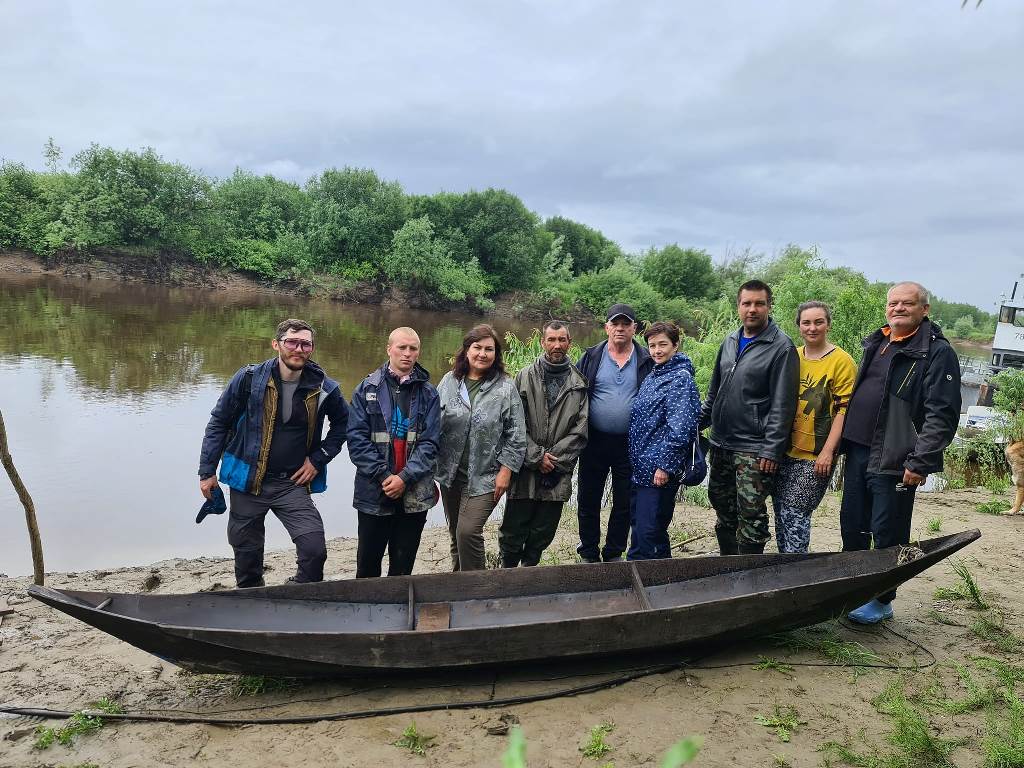Tomsk State University conducts large-scale research in Siberia and the Arctic, which are particularly sensitive to warming. The research is part of the interdisciplinary stratproject "Global Earth Changes: Climate, Ecology, quality of Life", supported by the Priority 2030 program. Scientists involve people living in the studied territories in their research to ensure the completeness of the data collected. It is planned that a new TSU scientific communication platform will appear in the north of the Tomsk region in the Kargasok district. The local population, including indigenous peoples – Selkups and Khanty, will be involved in the study of new socio-economic phenomena caused by climate transformation and environmental change.
"Recently we visited the north of the region – in the Kargasok district. The expedition was aimed at solving three tasks, including choosing a place for a new TSU research site. One of the main priorities of the stratproject "Global Changes of the Earth" is to study the issue of changes in the quality of human life caused by climate transformation, so the work will largely focus on this aspect. Our task is to find out whether global warming affects the economic conditions and the usual way of life of local residents. Climate monitoring will also be carried out at the same time. The new site will be part of the TSU transect – a large research infrastructure with a length of several thousand kilometers," says Sergey Kirpotin, director of the Center of Excellence of TSU "BioClimLand".
 During the expedition, scientists communicated with representatives of indigenous peoples – Selkups, Khanty and other residents of the small settlement of Karga (translated from Selkup – bear). According to the researchers, the selected area is of great interest from the point of view of the peculiarities of local ecosystems. In particular, there are northern flood meadows (sora՛), which are a comfortable place for fish breeding. Both commercial species – pike, ide, burbot, and valuable ones, for example, nelma, come here to spawn. Shallow, well-warmed water is optimally suited for the growth of fry.
During the expedition, scientists communicated with representatives of indigenous peoples – Selkups, Khanty and other residents of the small settlement of Karga (translated from Selkup – bear). According to the researchers, the selected area is of great interest from the point of view of the peculiarities of local ecosystems. In particular, there are northern flood meadows (sora՛), which are a comfortable place for fish breeding. Both commercial species – pike, ide, burbot, and valuable ones, for example, nelma, come here to spawn. Shallow, well-warmed water is optimally suited for the growth of fry.
For the population, which is mostly engaged in fishing, this is a good food base. However, local fishermen note that in recent years there has been less water and the fish is not as large as before. This is due to natural causes or caused by an anthropogenic factor – we need to figure it out. In general, despite the great remoteness of the settlements of the Kargasok district, anthropogenic pressure on nature is still present. For example, oil production is carried out less than 10 kilometers from Staroyugino and Novoyugino. What is the degree of influence of the extractive industry on ecosystems is also a question that needs to be studied.
According to TSU scientists, they are interested in close cooperation with the population, who will be able to contribute to the research not only by field observations. They can take meteorological indications, take samples according to a pre-prescribed algorithm. Such cooperation in the development of civil science will allow for mutual benefit: researchers will find out what climatic and socio-economic processes are taking place in the north of the Tomsk region, and local residents will learn more about the cause-and-effect relationships of changes occurring on their territory. Obtaining new data will make it possible to predict further environmental changes, look for ways to minimize the consequences or approaches of the population to adapt to them.
The new scientific site "Karga" is supposed to host summer fieldwork schools, primarily for young scientists. Representatives of the local and indigenous population living in this territory will participate in master classes and trainings of the summer school.